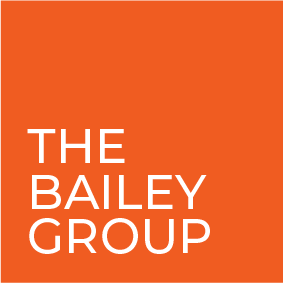
Overcoming Metathesiophobia
I have had many moments lasting from minutes to months when I have felt like a ‘metathesiophobe.’ It means “someone who fears change.” (I used the word once and was never invited back to that Zoom party, so fair warning.)
While I consider myself to be a competent (and on my better days, compelling) leader, there have been times when I was leading an organization through change and felt a lack of confidence, even afraid. For example:
- Unplanned change: I was a Department Director at a large organization and ½ of my union represented staff went on strike while the other ½ did not. How could I show empathy with all employees? When the strike ended and the striking employees returned to work, I wondered how I would create a new sense of engagement and belonging to our team.
- Planned change: I was a leader of an initiative to streamline multiple divisions of a large enterprise using a single Customer Relationship Management system. This meant many divisions (including my own) would give up some autonomy in favor of organizational efficiency. How would I help people change for the common good and not feel undue pressure to conform?
- Welcome change: I was a staff member on a team and got promoted to Director. I was thrilled about the opportunity to lead the group. I also recognized that the people who were my peers were now going to be my direct reports. How would I handle the change in status, and relate to them in new ways?
- Particularly unwelcome change: I was an organizational development and project management consultant to an organization providing in-person training to human service staff. Then COVID-19 hit, and everything changed. In-person work changed to remote work. In-person delivery of training changed to on-line delivery. How could I help the organization agree on the next wise actions in an incredibly uncertain context?
In each of these situations, I remember at times feeling scared, threatened, anxious, and unconfident. I’d heard the frequently quoted statistic says that 70% of organizational change efforts fail. What if the changes under my leadership became failures?
What I know now is that much of my fear of change is literally in my head. Neuroscience has shown us that human brains are structured to protect us from threats. Our brains continuously scan our environments looking for the unusual, the things that go against our predictions, the situations which are ambiguous, because any of those could potentially hurt us. When something changes, our brain puts us on alert and evaluates whether the new state of things poses a threat to our wellbeing.
Our brains look for evidence that harm may be approaching. This certainly poses a challenge for leaders during a time of change! What are we to do?
In 2008 Dr. David Rock, Director of the NeuroLeadership Institute, published a paper called “SCARF: A Brain-Based Model for Collaborating with and Influencing Others.” After interviewing over thirty neuroscientists to learn how the brain works, Rock identified five categories, or domains, of social situations where our brains respond with either a “threat response” (this could hurt me) or a “reward response” (this could be pleasant). By considering these five domains as we design and execute our change efforts, we can use the brain to our advantage by providing rewards and avoiding threats to successfully navigate through times of change.
Here are the five domains:
- Status – our importance relative to others. We can publicly recognize individuals who are helping the change initiative and spotlight specific actions they’ve taken. We can give our colleagues opportunities to evaluate their own work during the time of change, rather than having someone else evaluate them, which could be perceived as a threat. We can assure people that they belong to the organization, even if their role is changing.
- Certainty – our ability to predict the future. We can talk about what is not changing, what we know and what we don’t know about what is changing and telling them when we will get back to them with more information. We can also clearly explain why a change is necessary.
- Autonomy – our ability to make choices. It is common to feel a loss of autonomy during times of change, especially if the change wasn’t something we (or the organization) chose. As change efforts are being planned, look for opportunities to leverage the wisdom and skills of those being impacted by the change, and give them opportunities to make decisions or influence the direction of the change as appropriate.
- Relatedness – our sense of safety with and connection to others. Throughout change, it is important to show a genuine interest in the wellbeing of our colleagues. We can listen deeply to their concerns. We can also authentically share our own experiences, especially those that are similar to our colleagues’ experiences. Whenever possible, we can find ways to include employees in the change process, and show they belong.
- Fairness – our sense of what is right and wrong. We can design and implement change processes that consider the points of view of others and ensures that we communicate as transparently as possible with those being impacted by the change. We can use our empathy to understand what it is like for them to be in their shoes, and let those perspectives inform the change process and outcomes.
By applying the SCARF model, we can create a change strategy that helps minimize the brain’s threat responses and creates conditions where people feel safe and understood.
If you or your organization is going through significant changes and you’re feeling ‘metathesiophobic,’ talk to us! We’d love to help.




